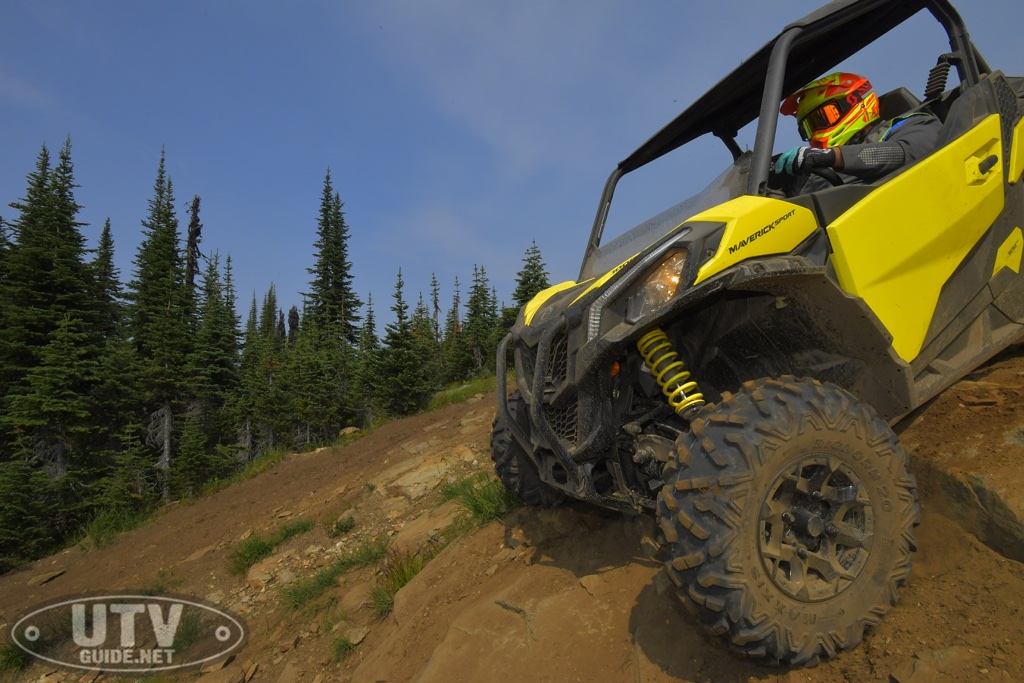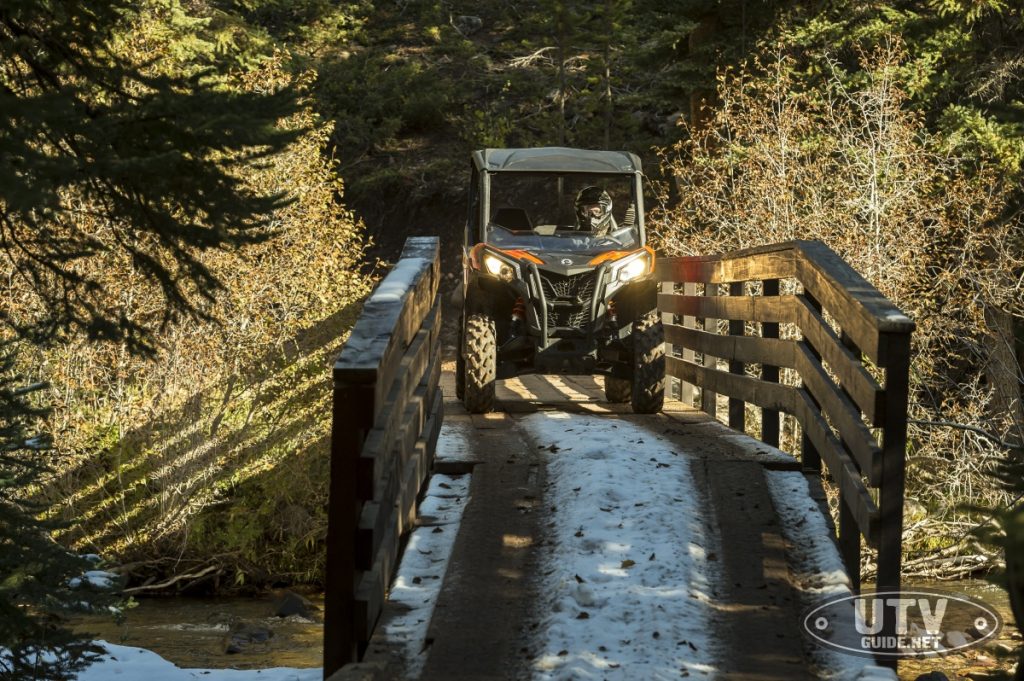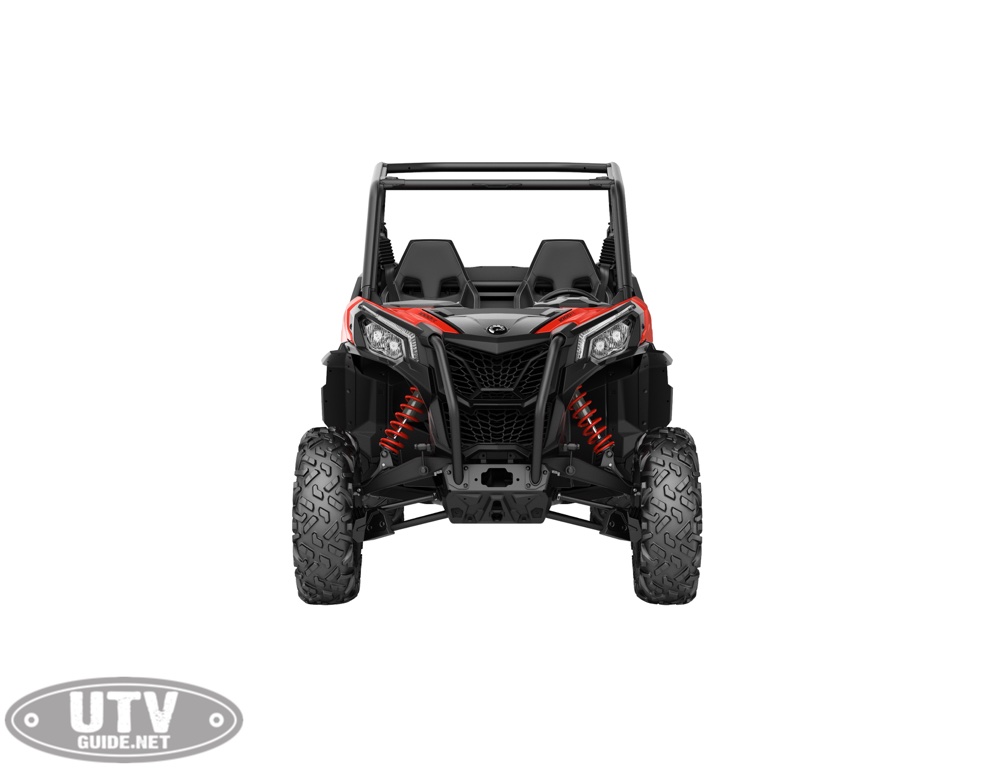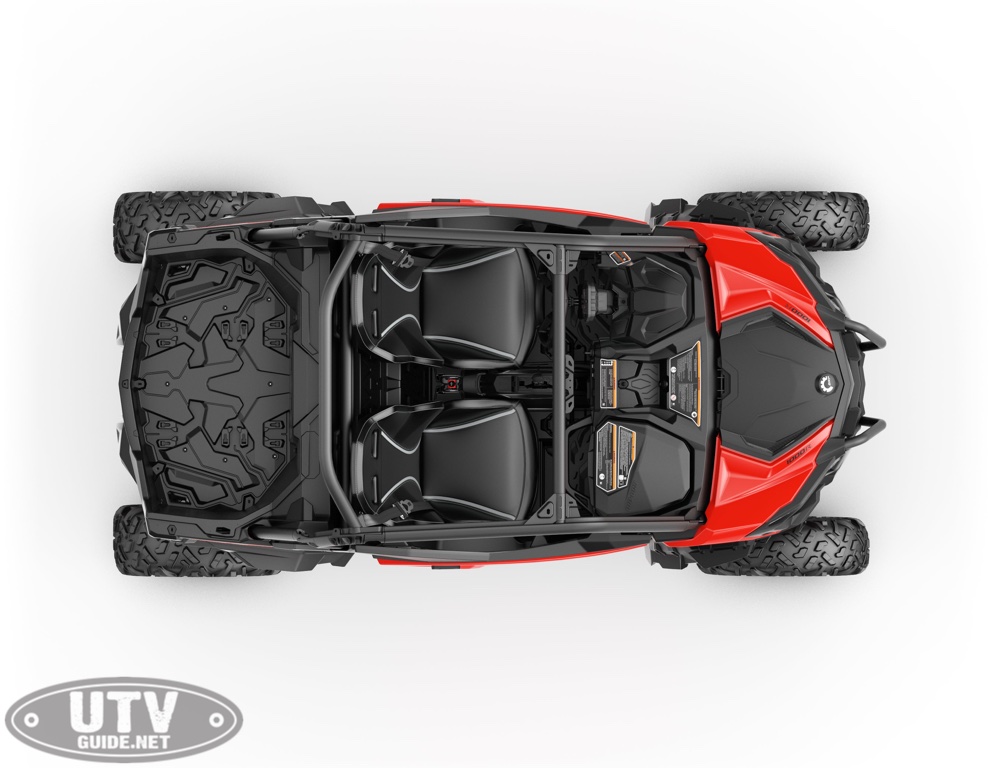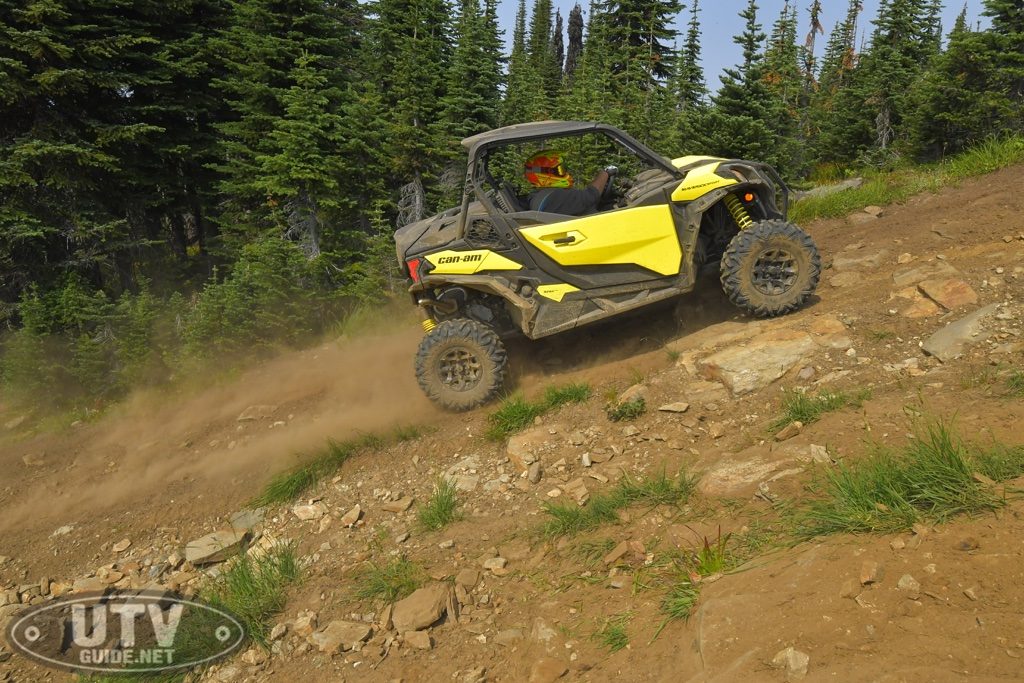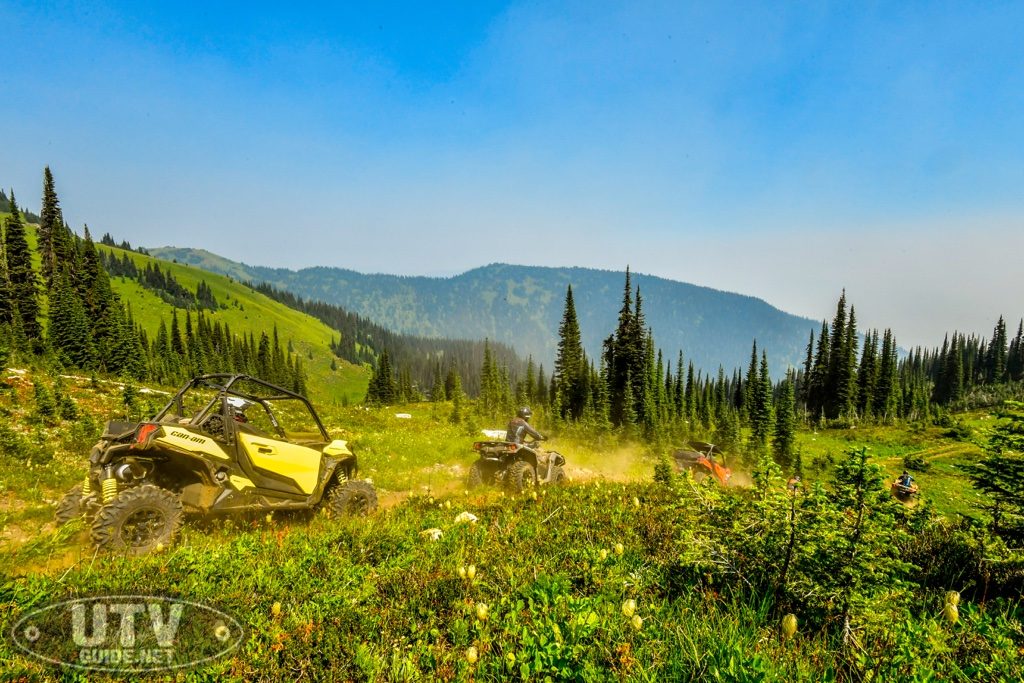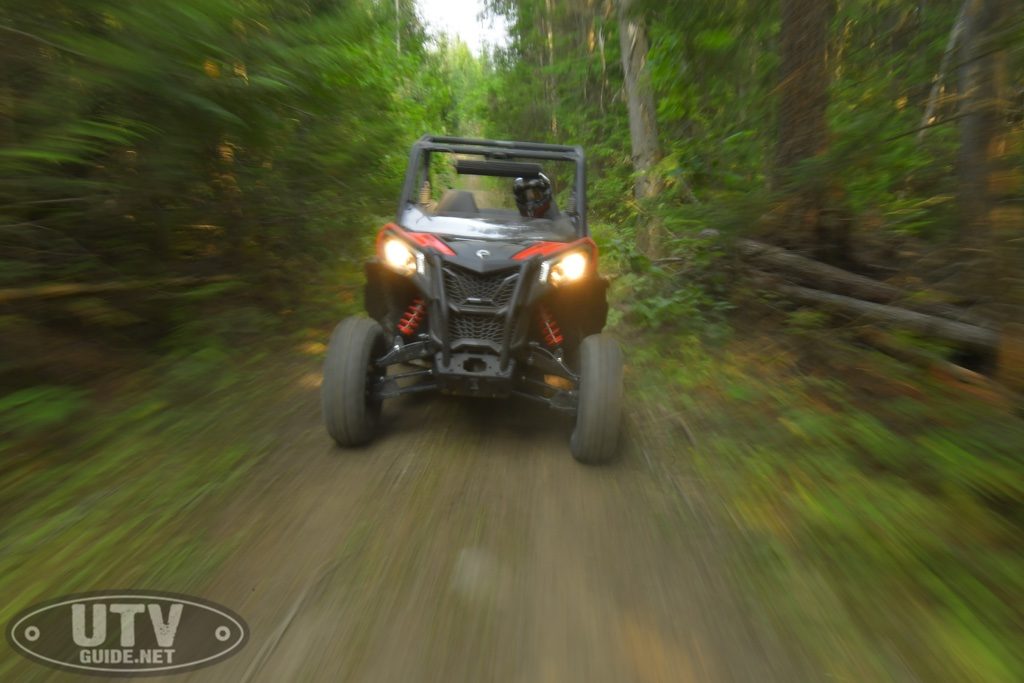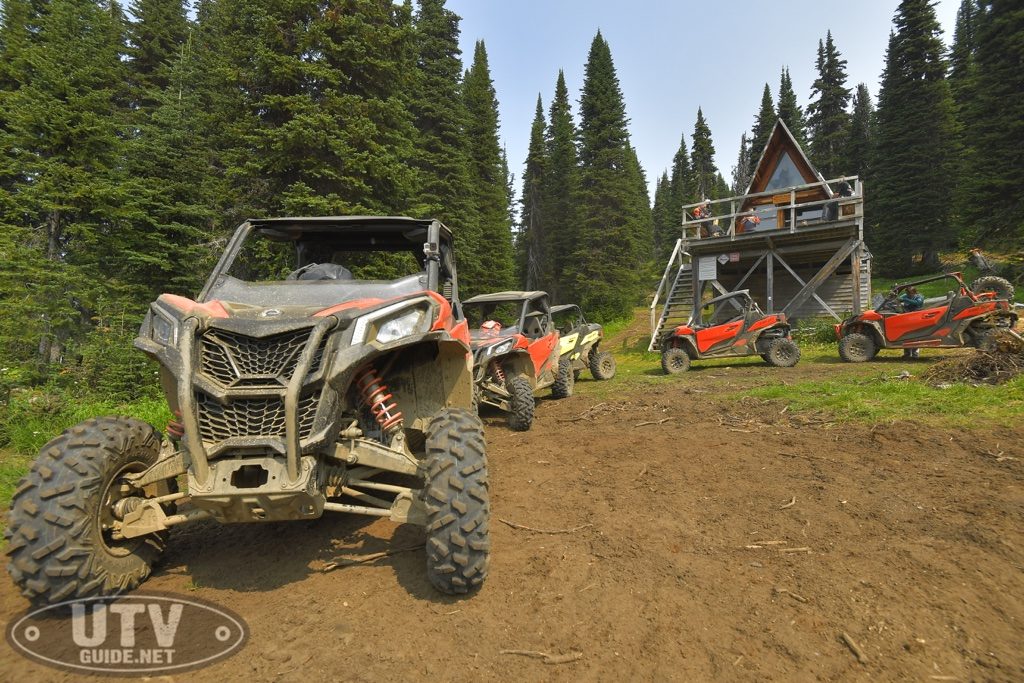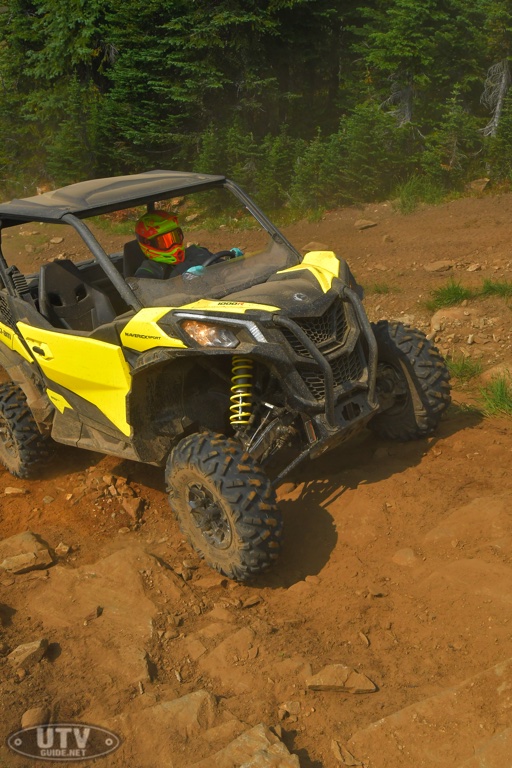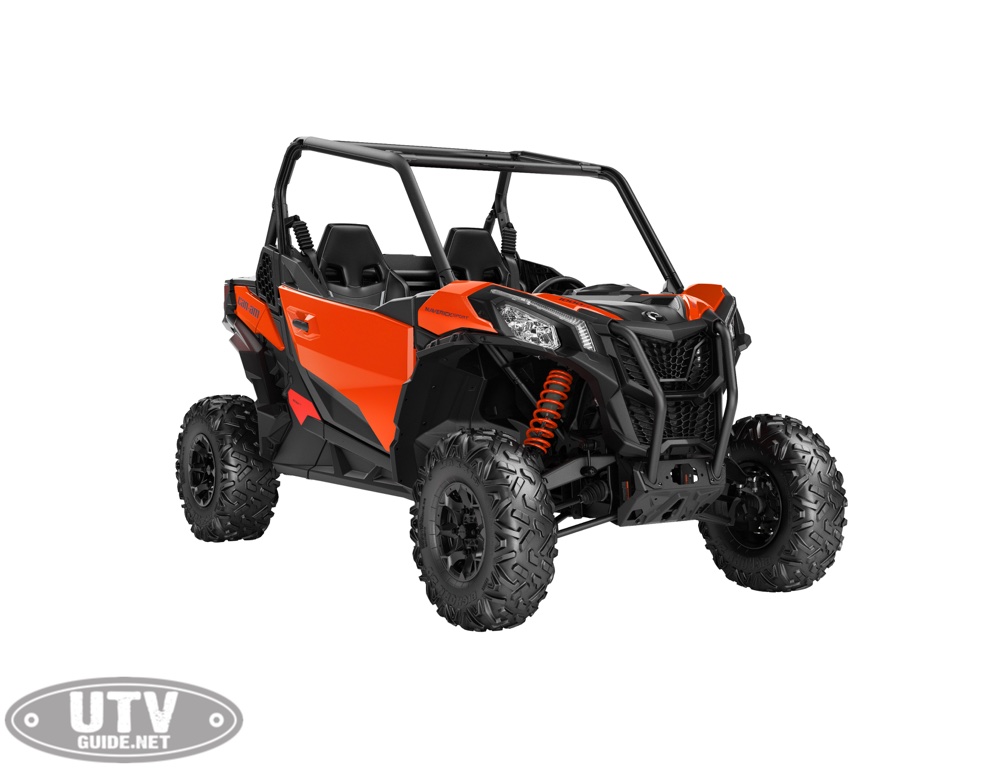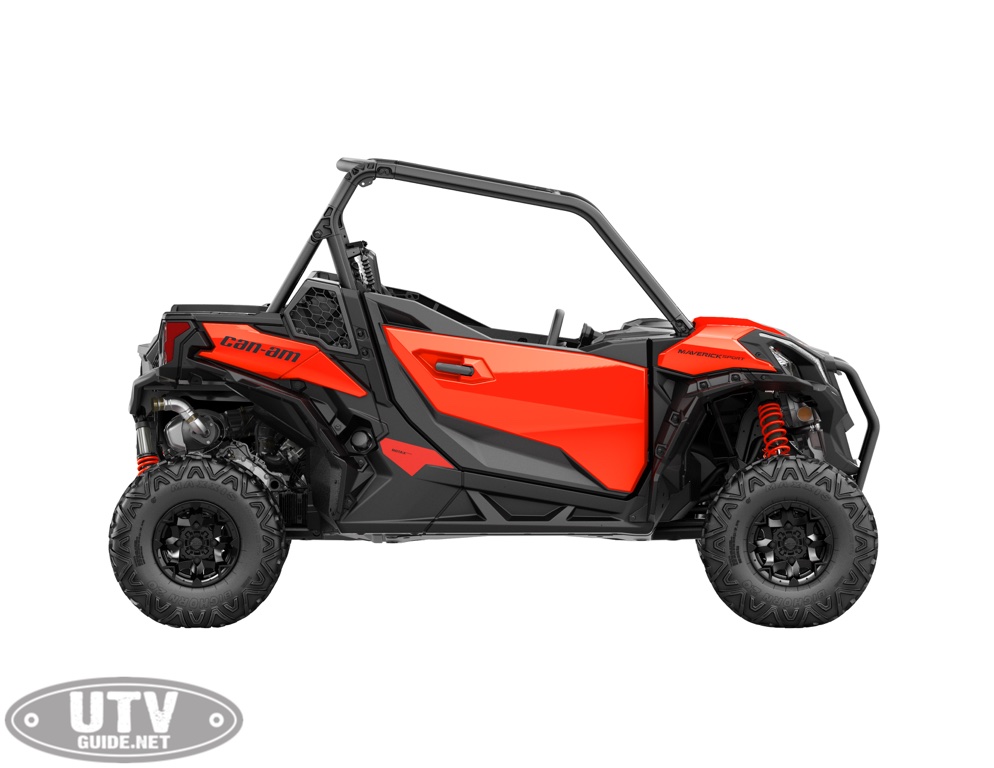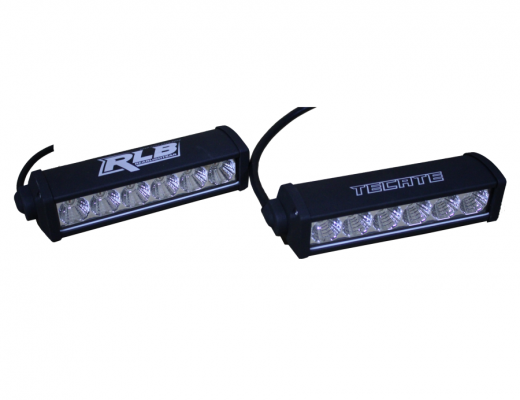By Derrek Sigler
There are certain size thresholds that apply to UTVs and where they fit into our types of riding. For sheer performance, we look at the 72-inch machines, or even the 64-inch machines for steady, fast driving. For extremely tight trails, the 50-inch machines reign supreme. Probably the broadest class, however, are the 60-inch wide machines that handle tighter trails, yet still have the stability needed for going fast. When Can-Am brought out the Maverick Trail late last year, it was an immediate winner. They achieved a great handling machine that used length to gain stability, and excellent handling and suspension along with a powerful motor to make it serious fun.
There was enough DNA from the Maverick X3 line to show the direction things were headed with the Canadian company, so it wasn’t too much of a stretch to see how a 60-inch machine could be coming soon. The Maverick Sport is that machine, and it was well worth the wait.
Passport in hand
One of the coolest things about Can-Am from a media goon standpoint, is that they tend to take us to some seriously sweet locations for intro rides. I can honestly say that I have never been anywhere with the company that wasn’t awesome. For the introduction of the Maverick Sport, as well as the redesigned Can-Am Outlander ATVs, we went to the country of origin for Can-Am – Canada. Instead of heading to Quebec, we went west to British Columbia to the Carl Kuster Mountain Park (CKMP) near Sicamous, BC. If you’re a snowmobiler, you may already know who Carl Kuster is. He is a former champion snowcross racer and now runs a ride destination like no other out there.
In the winter, the area gets up to 60-feet of snowfall annually. It is a destination for sled heads who want the ultimate mountain riding experience. Thankfully we were there in August, so there was no snow in the Monashee Mountains where we rode. Smoke from the rash of wildfires blazing across much of western North America added a permanent haze to the sky, but didn’t put to hash of a damper on the beautiful views. Luckily CKMP also does dirt tours in the summer, so we had some sweet trails to tackle and see how well the Maverick Sport would do.
Getting sporty
Now, don’t confuse the Maverick Sport with the Maverick Trail. I know many of you probably thought, as I did when I first saw it, that Can-Am simply added wider A-arms to make the machine wider. Not at all the case. Yes, there is some shared parentage here, but the Sport is a machine all unto itself. The Sport’s frame has the same 90.6-in. wheelbase from the Maverick Trail. That longer wheelbase keeps you planted on the terrain, and combined with the 60-inch width, makes for a machine that feels very stable.
There are technically three versions of the new Sport. The base Sport 1000 without power steering, the Sport 1000 DPS with power steering and the 1000R DPS. All three are powered by a 976cc Rotax V-Twin engine. The base model and the 1000 DPS have a version of the engine that produces 75hp. The 1000R produces a much more intense 100hp. At the core, it’s the same engine platform. Can-Am achieves this with technological help from the X3. Both versions come with large air intakes, oversized radiators and Donaldson airboxes come standard on both, but the 1000R uses a larger airbox from the Maverick X3, a specialized high-performance exhaust line and muffler, an additional CVT intake and the same CVT driven pulley from the Maverick X3.
Before we talk handling, driving both the 1000 DPS and the 1000R back-to-back is an eye-opening experience. The 75hp 1000 is a fun machine, and very capable to do just about anything you’d like to do. Jumping up to the 1000R and its 25 additional ponies is seriously like adding a turbo to the machine. The power boost across the curve is so noticeable that when we were cut loose from the guided ride and could just enjoy our time driving on our own, we were all fighting to get our hands on the 1000R.
Handling
Peter Parker’s uncle said, “With great power comes great responsibility.” Well true believers, I’ll say that with great power should come great handling, or you’ll wind up dangling off a tree branch or something equally painful. When we first drove the Maverick Trail, most of us agreed that the competition in the 50-inch space had been put on notice that a new standard was set. So, for the 60-inch category, does the same hold true? I don’t have to go out on a limb to say yes, the other manufacturers had better realize what Can-Am has produced. As much as I love the power delivery of the Sport, especially the 1000R version, the handling is even better.
All variations of the Can-Am Maverick Sport use double A-Arm front suspension and Torsional Trailing Arm (TTA) rear suspension. FOX 2.0 Podium shocks provide the shock duties with the front having 11.5-inches of travel and the rear shocks offering 12-inches of travel. Like the Trail, the Sport geometry positions the shocks at the outermost corners of the machine. This design gives the chassis more stability and improves handling by reducing the load on the sway bars that are built into the front and rear systems. It also lets the shock react to the terrain better, in my opinion.
On our guided ride up the mountains, we hit a wide range of terrain types. We rode a series of tight switchbacks up to the top and the guides stopped to tell us about a section we were about to go through that we needed to pay close attention to. You see, when 60 feet of snow melts, that water can wash out every trail and road. To help control things, water runs are built into the trails to direct the flow down the mountain without blowing out the whole trail. Some along the trail were minor, being a foot or so deep. Others were more like dropping in on the face of a Supercross-style jump. Try as I might, I couldn’t slow down for all of them, as some of them really did sneak up on me, and this is where I truly came to appreciate the suspension and handling of the Maverick Sport. One spot in particular I hit one of these washout/jumps while rounding a corner and it kicked the machine up in what can best be described like a buck from a bull. The front end went one direction and the rear end came up higher and in a different direction. I had something similar happen before in a different machine and let’s just say that I got to fully test the ROPS system of that machine. With the Maverick, however, it was a different story. The front tires hit dirt first and the machine just seemed to forgive my stupidity and correct itself. The guy behind me said it even looked cool, although I was sure I was going to go into a flat spin like another well-known Maverick and go flying off the side of the mountain, probably ending up like Goose.
Ergo-Loked and loaded
Can-Am uses the term Ergo-Lok to describe the ergonomics of their cockpit. If you’ve never sat in one of their machines, it is a different feel. You are positioned with a slightly recline that takes a little getting used to. Once you’re used to it, you’re actually very comfortable behind the wheel and you get a great feeling of control. This positioning combined with the excellent weight transfer front to back adds to the handling and confidence over a wide range of terrain types. The driver controls are arranged to help keep your focus on the trail ahead.
One thing that has to be noted about the Maverick Sport is the door. Can-Am uses a sweet new full door with the best handles I have seen yet. You get great protection from the elements, and you can get in and out easily. Just another nice touch to a great machine.
Daring, Precise and Confident
There are three words Can-Am used when describing the goals for the Maverick Sport – daring, precise and confident. I would say with no hesitation that they hit on all three points extremely well. You get a lot of confidence with how well the machine handles, it tracks very well going down the trail and the precision is spot on with steering and suspension. The engine, especially the 1000R, let’s you go as fast as you dare to go.
If I had to name something that could be improved, because you really want me to, I know, it would be that the rear cargo area leaves your stuff venerable to getting dirty and muddy when driving in nasty conditions. The tires are placed far to the rear corners and the body styling lets mud and goo fling up onto the rear cargo area. Not a major gripe, as you can add extended mud guards, or a cargo box, like my test unit had. But still…
I’ll be honest and say that I didn’t drive the non-power steering model they had on hand. I mean, I know that if you’re seriously budget conscious, you might go that route, but it’d have to be a killer deal to get me to give up power steering, especially on a trail machine. If you’re into cruising on the trails and terrain, but don’t need to push the limits, the standard 75hp model is perfect for you. If you’re like me and want to get your giddy-up on, the 1000R is the way to go.
Can-Am is nearing the end of the period where the CEO promised to release a new UTV every six months. In that time so far, we’ve seen the Defender line, the amazing Maverick X3 machines, the Maverick Trail and the new, awesome Maverick Sport. I don’t know about you, but I’m pretty excited to see what they do next.

